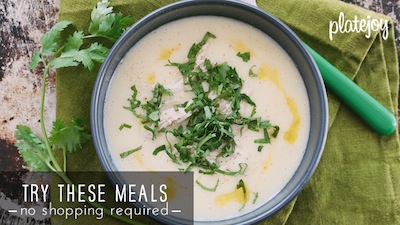Maverick Restaurant sits quietly on 17th street, just off the busy, foodie-trodden path of Valencia. Unless you know it is there, you might just pass by the banner, with its dashing red “M” emblem, that hangs modestly above the entry way. But this is a restaurant that no one, dietary restriction or not, wants to miss. Co-owners Scott Youkilis and Mike Pierce make a killer team with Mike manning the front of the house and the extraordinary wine list and Scott preparing the dazzling regional cuisine in the back.
I made my first trip to Maverick in the spring of 2007. At that point in my low sodium journey, the only restaurants I frequented had been steakhouses and make-your-own salad spots. My dining experiences were limited to plates of meat and leafy greens with little else on the side to jazz it up. As simple as my meals were, I was completely satisfied with them and was happy enough to sip on something bubbly while hanging out with friends. The meals I ate out mimicked the simple dishes I created at home: stir-fry, chili, pasta. Nothing extraordinary, but all sodium safe. I didn’t dare go beyond the boundaries of steaming, sauteing, and broiling. But this first visit to Scott and Mike’s place, on that warm April evening, changed it all.
Boy had called ahead with a long list of dietary restrictions. The result: roasted duck with handmade gnocchi and a bevy of greens that had been sauteed in vinegars and delicate olive oil. This was no steak and steamed asparagus. There was obvious thought and care given to the meal and my plate looked as beautiful and full as my dining companion’s. That evening, I realized it was possible to cook beyond the basics, even when keeping sodium to a minimum, and that flavor and presentation do not have to suffer. Both eating in and eating out could be a lot more fun than I had imagined.
Three years after our first meeting, and many exquisite low sodium creations later, I sat down with Scott to discuss what it is like for him to cook low sodium meals and what tricks he uses to make the missing ingredient negligible. My dinner that evening was one of the best I had ever had:
An Aperitif of Cauliflower Boiled in Saffron Broth with a Parsley and Mustard Flower Pesto
Lime Marinated Beet Salad with Shaved Fennel, Arugula, and a HOUSE-MADE, LOW SODIUM, Fennel Seed Cheese
Spice Crusted Steak and Peppered Potatoes with Sauteed Radicchio, Topped with a Poached Egg
Scott continues to push the boundaries of how intricate and interesting low sodium meals can be – his daring and determined attitude lives up to the name of his restaurant. While he confessed that salt remains an integral part of his cooking, he finds the exercise of cooking without salt exciting. And if he had to cut it out, for personal reasons, he knows it would be a challenge, but that after a while, he could dig it.
Here is a brief excerpt from our interview. If you have not treated yourself to a meal at Maverick’s, make your reservation today. It will be an unforgettable experience. Like Scott, remember to be fearless and creative in your low sodium cooking. And as always, chow on.
Sodium Girl: How much does an order like mine change the flow of the kitchen?
Scott Youkilis: For us, we are always being thrown curveballs and we are used to it. We are able to handle special orders because of the size of the restaurant and the fact that we have fresh products. We often create things on the fly. When friends and VIPs come in, we make a special amuse bouche for them. We will actually look at the fresh ingredients we have, stop and think, and make sense of the products. It is in these moments that you turn off the robot and really start to create things.
SG: For you, where is salt a necessary component and are their uses where salt is superfluous?
SY: The places you cannot leave salt out is in curing meats and preserving. Those are times that you need salt. I’ve seen nitrate free bacon, but I kind of think that it is only bacon when you do the following procedures to it: cure it, smoke it, and fry it. If you do not do those things, then it is not really bacon. But there are definitely ways around it using salt for taste. Like this evening, we used a lot of acid since it will tenderize and bring out flavors much like salt does. Acids and vinegars extract flavors and enhance them. There are also so many cool vinegars to use and of course all the herbs and spices – it is unbelievable what you can do with them.
SG: Are there any specific cooking techniques you like to use to enhance flavor naturally?
SY: Poaching things in wine or like tonight, in a saffron broth, can give it a deeper flavor. You can also make really rich sauces with meat stocks that you then reduce with wine. It might not be as flavorful as with salt, but you will achieve the same texture. Grilling and searing can give meat a nice crust and it will lock in the juices, which have an unique flavor of their own.
SG: Any last advice for a home cook?
SY: Continue to look into cooking techniques. Experimenting does not have to end if you cannot eat salt. Think about incorporating more fresh vegetables into your diet (as they always have more flavor) and do less to them, because when you cook them a lot of their natural flavor is lost. Just keep it as natural as possible.










i’ll never forget the amazing plates placed in front of you and all of us at gina’s maverick bday soiree. that place is magical, scott is the man. cheers to keeping it natural.